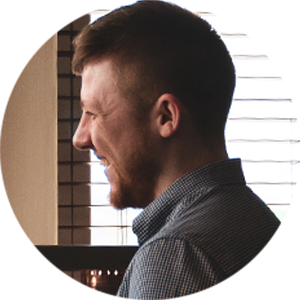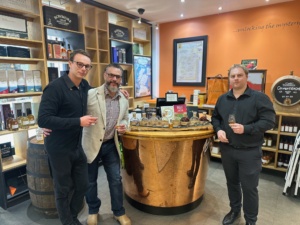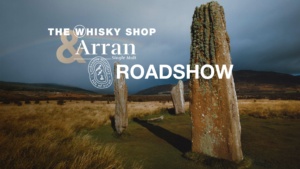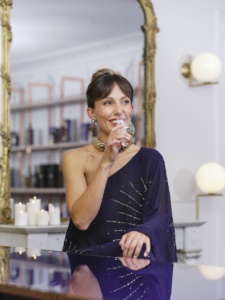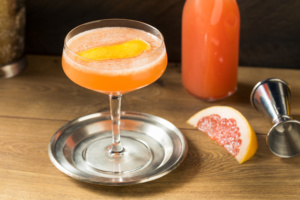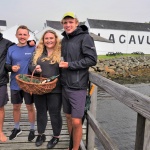Going, Going, Gone! Rare Whisky 101
We get the inside scoop on rare whisky acquisition from David Robertson, former Master Distiller for The Macallan and co-founder of whisky valuation, brokerage and consultancy service, Rare Whisky 101.
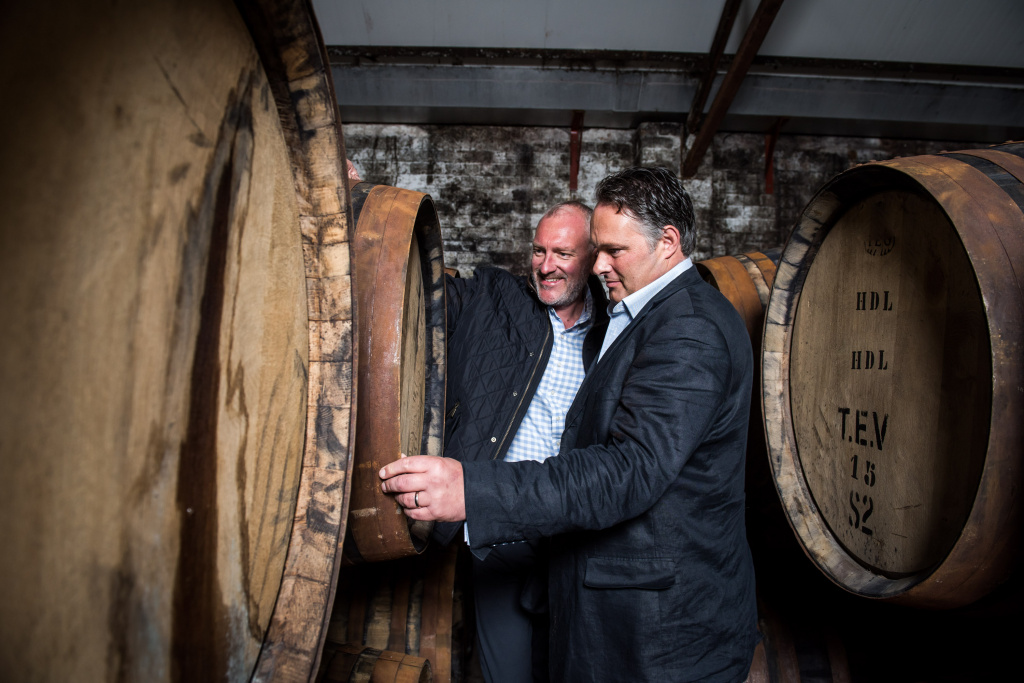
David, both you and your father have enjoyed impressive careers in Scotch whisky – it seems you were pretty much Scotch whisky born and bred! Where did it all begin?
Indeed, a fun 30 years or so in the whisky industry! My father worked for Scottish Malt Distillers and I was born when he was Assistant Manager at Royal Brackla in Nairn. He was then promoted to Manager at Aberfeldy where I lived an idyllic childhood from 1970 to 1983, walking through the distillery to and from school most days. During my father’s career, my interest in science and whisky really grew. I spotted the Brewing & Distilling course at Heriot-Watt University, starting in 1985 and graduating in 1990 with a 2:1 Hons. Phew.
Your career highlights include Distillery Manager and Master Distiller at Macallan – tell us a bit about your time there.
Macallan was an incredible experience. However, it all came about given my university degree and the four years I spent working at United Distillers (now Diageo), where I worked at Benrinnes Distillery for one and half years as Trainee Manager. In August 1994, Macallan decided to take me on and I began working under the great Frank Newlands. It was a tough gig for a young (and wet behind-the-ears!) 26-year-old, but I moved to live on-site at the distillery and, under Frank’s counsel, truly learned the ropes. I had been on the nosing panel at United Distillers and, after a bit of training from Frank, was invited to take a much more active role supporting Frank in the sample room to work on the full Macallan range.
In 1996, Macallan was taken over by Highland Distillers (now part of Edrington) who put a lot of investment behind the distillery, brand and business. I was invited to develop some new whiskies which was great fun! My proudest creations are Macallan 1979 18 Year Old Gran Reserva, Macallan 30 Year Old – Blue Box, Macallan 1949 50 Year Old Millennium Decanter and the Fine & Rare range.
Sounds fantastic! And how about your more recent roles?
More recently I was lucky to join Whyte & Mackay as Innovation Director and was tasked with re-positioning and re-branding The Dalmore. We had an amazing depth of aged stocks to play with and, led by the incomparable Richard Paterson, we set about creating a new range, new look, new place…and yes, new (higher) price.
Latterly, I’ve joined forces with Andy Simpson to set up Rare Whisky 101 – brokers, valuers and analysts. It’s been an incredible ride with an explosion in global demand for rare whiskies, the dynamic growth of auction sites and the emerging demand for rare casks.
And just this year I have been lucky to be involved in developing Holyrood Distillery in the heart of Edinburgh – returning malt whisky distilling to the capital for the first time since 1925!
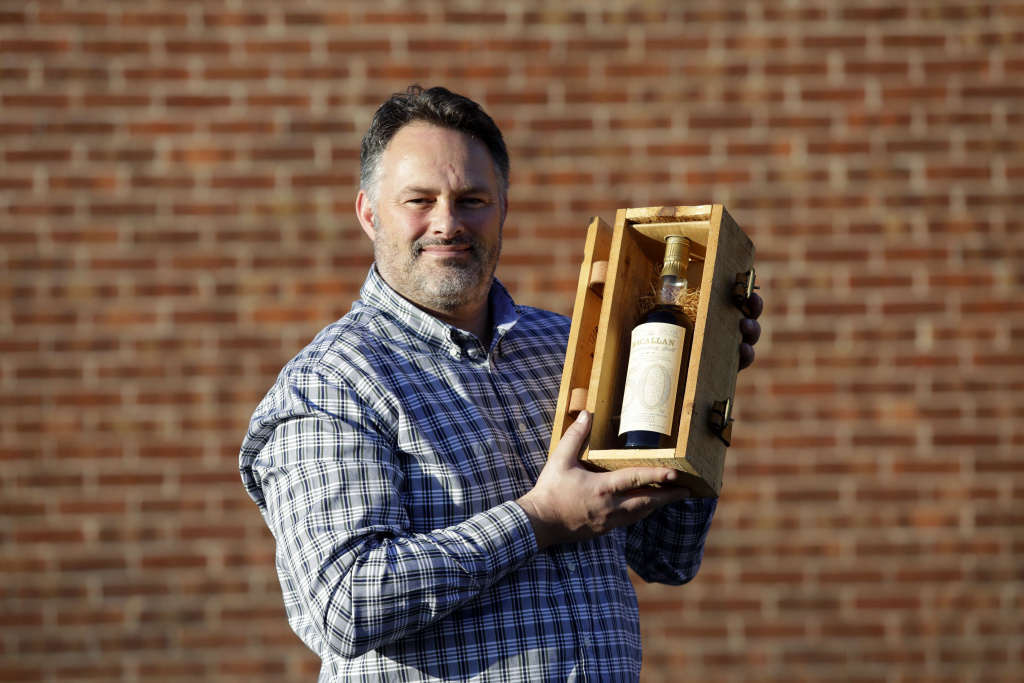
Rare whisky acquisition is growing fast; what role does Rare Whisky 101 play in this market?
Rare whisky acquisition is exploding! While working at Macallan, I saw the passion collectors and connoisseurs had for the brand, its new releases and its back catalogue. However, it’s only in recent times that we’ve seen an explosion in demand for rare whisky, as well as an increase in auction houses and brokers seeking to satisfy the opportunity. I am continually amazed at the growth in both the number of bottles coming to auction and the prices paid. It is truly staggering. Proof – if more proof was needed – of the enduring interest in single malt Scotch.
Andy, my business partner and co-founder at Rare Whisky 101, has been tracking the market since around 2003, so we have an incredible database of over 50,000 different bottle types and 525,000 price records – the largest and most detailed price database in the world. We have a team of people who track all UK auctions; collecting price data daily and updating our database. It gives us huge insight to the market, and we publish our findings on a monthly-basis as well as producing a half- and full-year report that can be downloaded for free from our website.
Our role has evolved from just tracking the market to becoming global treasure hunters, where we are tasked with seeking-out, authenticating and valuing rare collections of bottles and casks for clients all over the world. A tough gig…but very enjoyable!
I bet. What brands do you see as auction market leaders?
From a collector’s point of view, Macallan, Ardbeg, Bowmore and Highland Park are at the top – a nice mix of regions, styles and flavours. From an investor’s perspective, Bowmore, Springbank, Brora and Glenugie are leading the current market, as well as Macallan – these are the brands most likely to increase in value.
2019 saw the sale of two record-breaking bottles of 1926 Macallan – one fetching £848,750 and the other selling for £1.2m, becoming the world’s first million-pound whisky! What is it about The Macallan that makes it so successful in this market?
How long have you got?! Macallan is known for its quality liquid, as well as the range, depth and breadth of its releases – started by the Vintage 18 Year Old and 25 Year Old releases. Macallan captured a place in the heart of its customers back in the 1980s and 1990s and this helped cement the brand as a truly iconic single malt, as well as a highly collectable whisky – led by Italian fans and more recently strengthened by demand in USA and Asia.
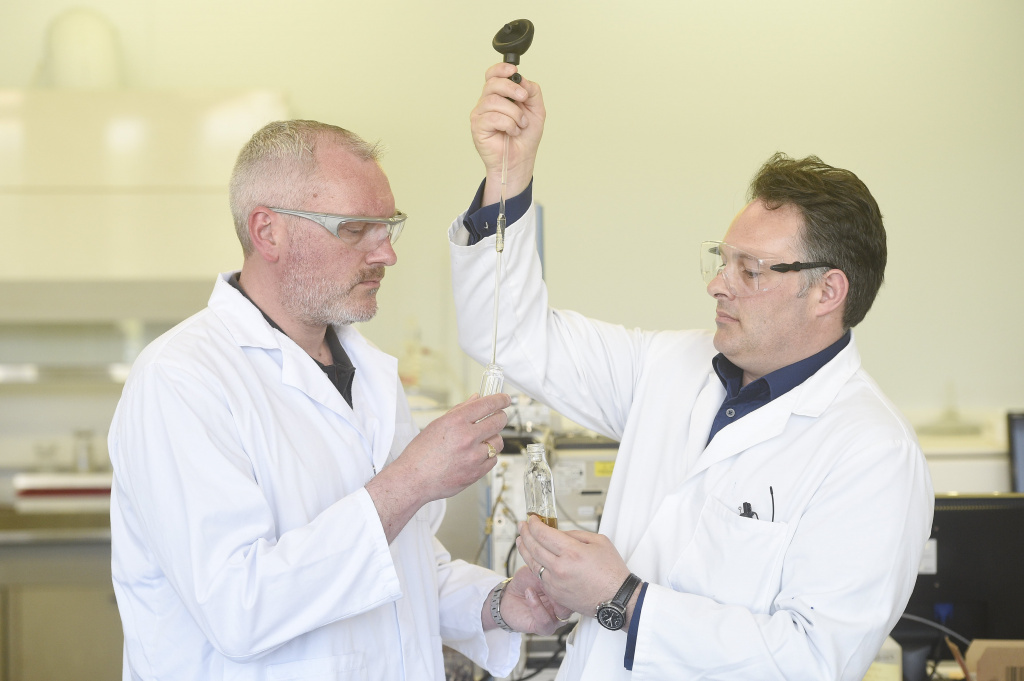
Aside from brands, what are the current industry trends in terms of cask, age and region?
Older is more valuable. Rare whiskies and limited releases are attractive. Sherry maturation is king – for connoisseurs, collectors and investors alike. Silent stills are in high demand, such as Port Ellen, Brora and Rosebank. Each of these distilleries are being rebuilt and resurrected; it will be fascinating to see what happens to prices in the auction market.
And aside from Scotch, do other types of whisk(e)y perform well in the rare whisky auction market?
We’re tracking the market for Irish, Taiwanese, Japanese and grain whiskies – we’re seeing emerging demand for these but from a tiny base. Japanese whisky continues to perform well and is closest in development and demand to Scotch. For example, the sherry-matured silent still of Karuizawa is highly sought after.
What are the key characteristics of a bottle of whisky likely to appreciate in value?
Rarity. We have often stated that “managing the value of scarcity” is critical – too many bottles and the price may be slow to rise. As well as this, stunning-quality liquid, fit-for-purpose packaging and a fair price. Each of these key elements will help drive interest to as broad an audience as possible.
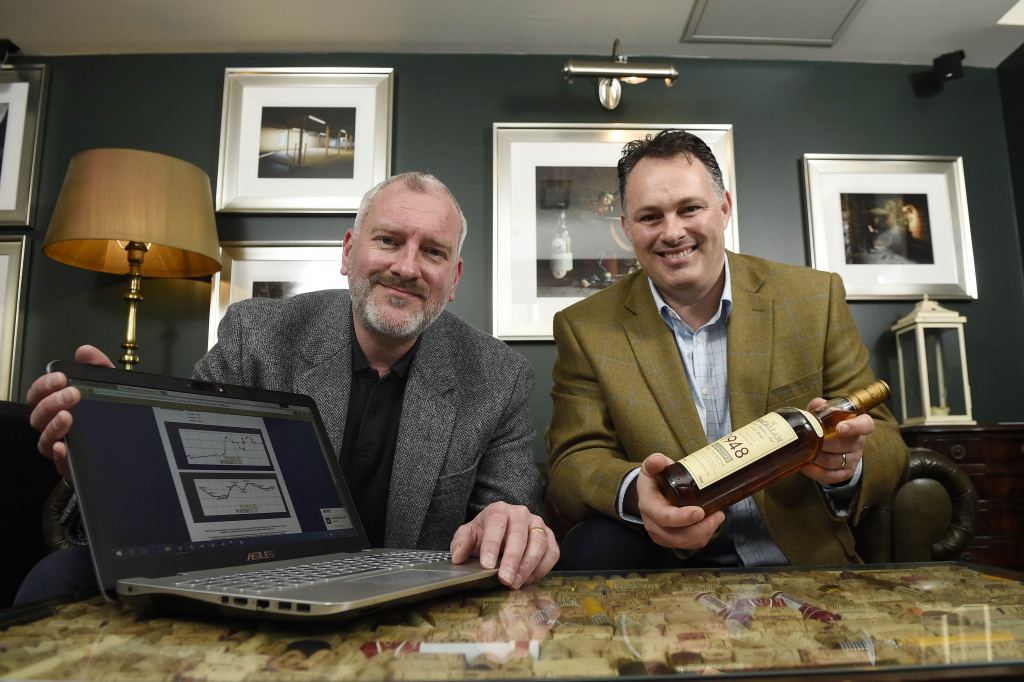
Is the rare whisky auction market having an effect on brand prices?
Yes. What we are seeing now is that many brand owners are tracking the secondary market and using this data as a tool with which to set new release pricing. It is amusing to note that every distillery with a 40 Year Old release now tries to set it at a high release price and hope it sells, however, most brand owners forget that their brand may not have the liquid credentials nor be as sought after as the top malts.
I think many traditional retailers are now overwhelmed at the number and variety of single malts that expect to sell bottles at over £1,000! Once you break through this price barrier, the market is small. What the market can’t lose sight of is the critical need to invite, persuade and tempt as many owners of the bottles to open and consume them.
The UK auction market for rare whisky has more than quadrupled since 2015 and a record £40.7m of rare whisky was sold at auction in the UK last year. Do you think this is set to continue or is there a chance it could plateau?
We think it will continue to grow. This year’s Annual Report reveals that international demand shows no sign of slowing. The media demand for news stories on rare whiskies remains strong and we have seen some amazing sales in recent months – we have even had The Guinness Book of World Records recognise the most valuable whisky collection! However, not every bottle from every brand will ‘win’ in the secondary market; like any sector, there will be winners and losers.
In your eyes, are there different ‘types’ of whisky collector?
We see four key buyer typologies: connoisseurs looking for brilliant-quality and delicious-tasting liquid, collectors looking to add that next distillery release to their bar or display cabinet, investors looking for long-term value appreciation and flippers keen to make a fast buck! And often, a buyer is motivated by all the characteristics noted above.
Are you a whisky collector yourself?
Yes. Over the years, I’ve been lucky to be given opportunities to purchase some rare bottles of Macallan and Dalmore. I also collect Rosebank and Brora. My collection is small in size but seems to gain a wee bit in value most years and is becoming a nice little pension pot!
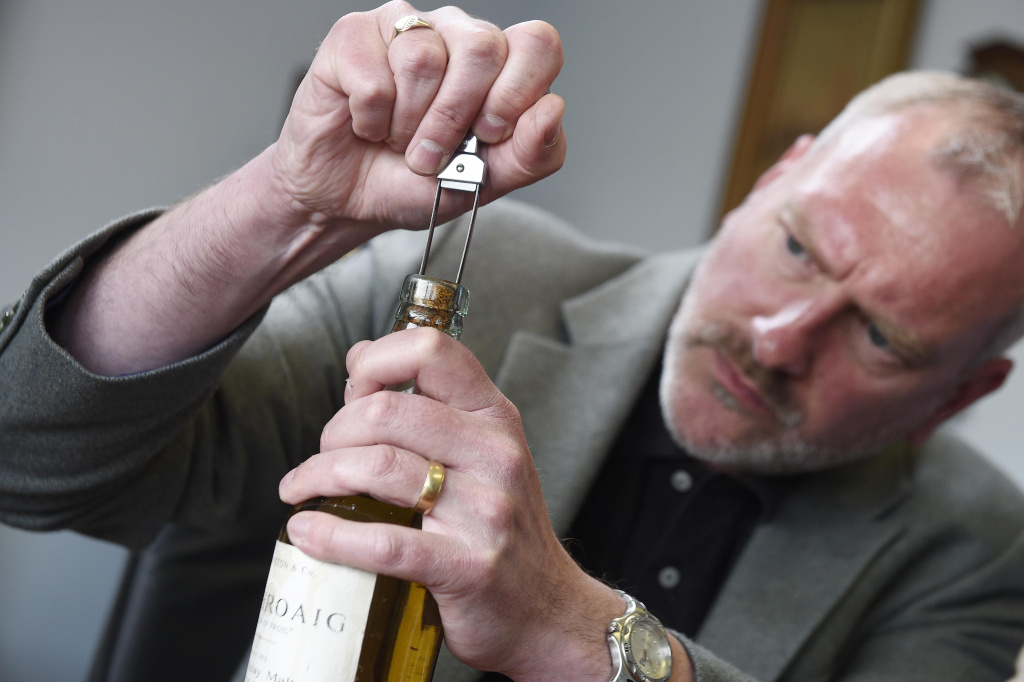
As well as bottles, Rare Whisky 101 also offer a cask brokerage service to meet an increased demand for the procurement of rare whisky still held in barrels. What are the benefits of owning a cask?
There are lots of benefits! Getting hold of a whisky you love from a distillery you covet can be an amazing experience. Perhaps acquiring an unusual cask type or a whisky that marks a special date or year – all of these things are powerful drivers for acquisition. Many of our clients are looking for 30 Year Old whiskies and older to use for gifting, drinking with friends or enjoying privately in their home bars. However, our treasure-hunting isn’t without its challenges – we will only ever recommend a cask for purchase once we have assessed the liquid quality, re-gauged the cask and negotiated a fair market value price.
Are there any risks?
With procuring a cask comes a number of risks – whisky quality, storage conditions, cask integrity and liquid losses to name a few. It’s important to point out that not all casks are made equal – many old casks are so old because the original producer and owner didn't think the liquid was good enough to bottle at 12, 15, 18, 25 years, so they have left the whisky to age and age. As well as this, it can be complex to design your own bottle, label and box and then arrange to have your liquid bottled and shipped – there are tonnes of hoops to jump through with HMRC and lots of rules, regulations and bureaucracy.
You’re a busy man! As well as Rare Whisky 101, you are the co-founder of Holyrood Distillery that opened up in Edinburgh this summer. Tell us a little bit about the distillery and the liquid you’re making there.
I can claim no credit for the idea – Canadians Rob and Kelly Carpenter were the originators – I was just lucky to be invited along for the ride! The Carpenters fell in love with Edinburgh back in 2004 and hankered after finding a way to create a business in the city. From this, an idea developed about resurrecting single malt whisky distilling! We agreed to join forces in the late 2000s and since found the city centre site at St Leonard’s station, developed the plans, raised a few million pounds and have now been up and running since last summer. It has been hugely exciting, challenging and frustrating journey – all at the same time!
In terms of production, we have designed it in such a way that we are a truly flexible distillery – we can make gin, gin liqueurs and, of course, single malt whisky all on-site. We have a one tonne system with a Lauter tun, six fermenters and a pair of small yet incredibly tall copper pot stills. We can triple distil and we’ve also added a retort tank to our spirit still to allow us to play even more flavour tunes. Our ambition is to create four key flavour styles: sweet (think chocolate malt and ex-Bourbon barrels), fruity (using distiller’s, brewer’s and wine yeasts to develop lots of esters before maturing in fortified wine casks), spicy (Belgian beer yeast and ex-sherry casks) and smoky (peated malts will drive this style).
We’ve also had huge demand for our custom-made Cask Programme, where we work with clients to design a bespoke recipe just for them; considering malts, yeasts, fermentation times, cut points for the stills and, of course, wood for maturation. I have been amazed and delighted at some of the ideas our clients have come up with – a true collaborative process!
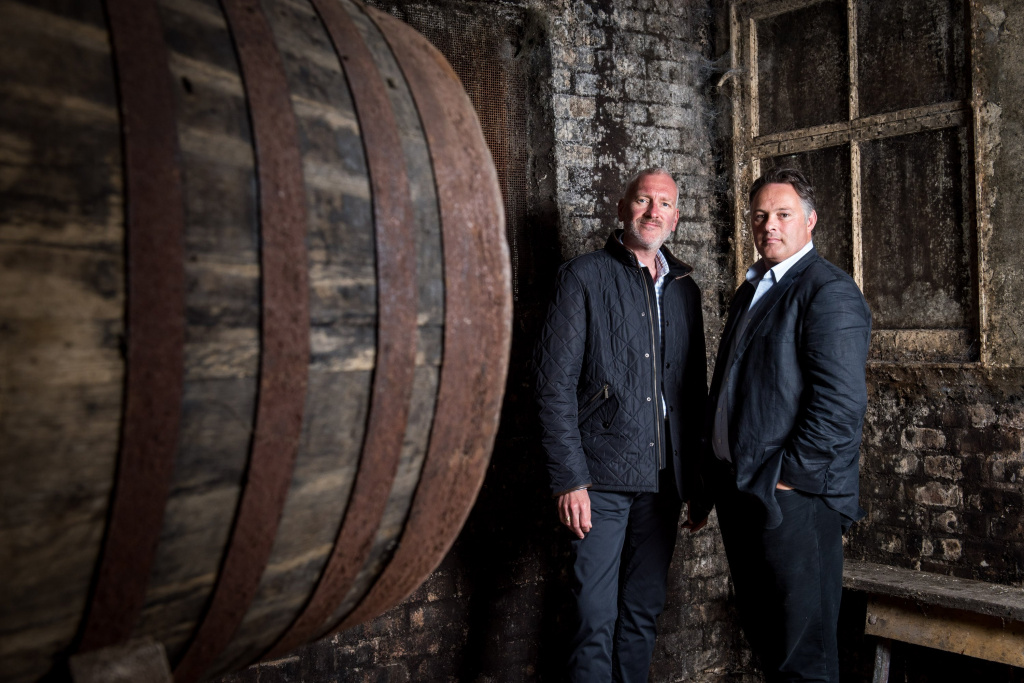
KNOWLEDGE BAR – Get to know David
What’s currently open on your spirits shelf?
I have some amazing old blends from the 1960s and 1970s (Dimple, Black & White, Johnnie Walker Red Label, Grand Old Parr) which taste fantastic, as well as some old bottlings of The Macallan distilled in the 1970s. I recently acquired some old bottles of Armagnac and Spanish brandies – and I always have some Holyrood Distillery gins on hand!
What’s been your most memorable dram?
Macallan 1979 18 Year Old Gran Reserva. When working at Macallan in 1996, I was lucky to be given a blank sheet of paper and told to create a new bottling. I decided to use exclusively first-fill Spanish oak ex-sherry casks, previously filled with dry Oloroso, Amontillado, Palo Cortado and sweet sherry wines. I picked fifty butts, vatted them together and bottled the liquid, ready for launch in 1997.
In this edition of Whiskeria, our travel feature is all about Glasgow; do you have a favourite drinking spot in the city?
I love The Griffin on Bath Street. It reminds me of happy times when working for Whyte and Mackay, just along the road on St. Vincent Street. The beer is good, the food is good, but it was the people I was with that made it such fun… you know who you are!
Do you have other passions aside from whisky?
My kids, Ali and Livvi, who have now left home, but I hope I helped to shape them a little in the right way! My wife Susan and I are also lucky to look after a couple of pooches – Barley (of course!) and Blossom. I love listening to music – I am a bit of an old prog rock fan and love Rush. I’m also currently enjoying Rival Sons, Foo Fighters, Pineapple Thief, Steven Wilson and Riverside.
Are you reading or watching anything interesting at the moment?
The Looming Tower is hooking me in just now. Ozark was pretty enjoyable, and I look forward to the new series.
What does a day off look like for you?
It starts with a dog walk at one of the local beaches – Cramond, Blackness, Gullane, Yellowcraigs or Elie – followed by a pub lunch and a pint of Tim Taylor’s Landlord Pale Ale, all in the company of my kids and wife.
KNOWLEDGE BAR – About Rare Whisky 101
- Launched in 2014 by Andy Simpson and David Robertson
- Andy and David are both Keepers of the Quaich (and whisky-collectors themselves)
- Rare Whisky 101 has a database of over 50,000 different bottle types and 525,000 price records – the largest and most detailed price database in the world!
- rarewhisky101.com
- [email protected]
- Twitter: @WhiskyInvestor

Discover rare whisky and sell your own with our quick and easy to use Auction service. Rolling auctions means you don't have to wait a month to buy or sell and our unique virtual wallet will help you trade up with fewer bank fees. Get started today.

This feature originally appeared in the Spring 2020 edition of Whiskeria, delivered to the door of W Club subscribers and also free with any purchase in store or online at The Whisky Shop. Read the full Spring 2020 issue of Whiskeria online free.
 4.7/5 with 10,000+ reviews
4.7/5 with 10,000+ reviews